Uncover Bordeaux's vibrant flavors and culinary gems with our expert guides. Plan an unforgettable trip now!
Read more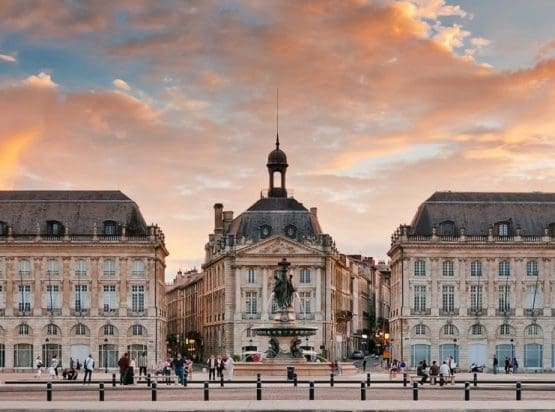
EXPLORE ALL OUR BORDEAUX WINE REGIONS GUIDE
Last updated: April 4, 2025
This is where it all began. Graves, a vast expanse of land that includes vines planted in the southern outskirts of the city of Bordeaux, hosts Bordeaux’s oldest vineyards. Its arid sand and gravel terroir has been supplying Europe’s aristocracy with aromatic, supple red wines for many centuries; in the 1300s, the archbishop who became Pope Clement V (of Avignon) planted what is now Château Pape Clement.
Three hundred years later, the Pontac family produced wine at Haut-Brion, one of Bordeaux’s illustrious First Growths. Today, these estates are located in Pessac-Leognan, a subregion within Graves known for producing some of Bordeaux’s finest red and white wines.
Yet there is much more to Graves than classified estates and blue chip labels. The southern end of this expansive zone has been reinvigorated by outside investment of late; the ability of Graves soil to make excellent red and white wines has been proven, time and time again, by Chateau Rahoul, Chateau de Chantegrive, Clos Foridene – and many others. Modern Graves, confident and re-energized, has become the veritable bargain of Bordeaux. It should be on your radar.
Discover More About French Wine
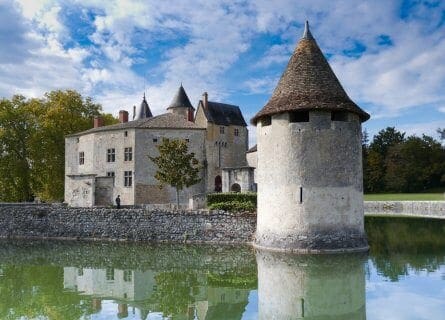
Bordeaux and its environs have been growing vines since the Roman invasion of Gaul in the last century BC; Rome colonized the Aquitaine region in 56 BC, planting vineyards on the sandy river banks just south of the city.
Peace and prosperity endured until AD 476, when the Western Roman Empire buckled under the weight of its own hubris. However, the Germanic Franks seized power during the ensuing chaos, ruling France until the dynastic line abruptly ended in the 10th century.
In 1154, Eleanor of Aquitaine married King Henry II of England, uniting these two great powers against their rivals in France. This was the catalyst for the great English love affair with claret (an unofficial term for Red Bordeaux) that remains as strong today.
Medieval Vineyards and the Emergence of ‘Graves de Bordeaux’
By the Middle Ages, the bulk of quality vineyards lay around the city itself and up to 10 kilometers to its south. In Medieval Europe, this thriving region earned the name ‘Graves de Bordeaux,’ signifying a center of excellence. However, many vines were employed in the production of sweet wines instead of red. Further to the south, along the banks of the Garonne, Langon, Semillon, Muscadelle, and Sauvignon Blanc, saw extensive planting.
Meanwhile, the land south of La Brede became a sea of vines in the 17th century; the wines of Haut-Brion were much admired in England, described in the diaries of Samuel Pepys (a parliamentarian and naval administrator) as having a “good and most particular taste.” Yet there are earlier references to “Ho Bryan” in the cellar records of the English monarch Charles II, written in the 1600s.
Popularity and international fame continue to enrich investors who founded estates in the Graves zone, cultivating more than 5,000 hectares between them.
The Decline of Graves in the Shadow of Medoc
However, as the Medoc became central to Bordeaux’s fine wine industry in the 20th century, Graves began its steep decline. Much of the area under vine disappeared as rising land prices saw many owners sell up; Bordeaux’s urban expansion demanded more land for houses after the Second World War. By the 1970s, there were only 500 hectares left in the northern section of the Graves Zone, where all the most prestigious estates were located.
Graves and Pessac-Leognan Appellations
Nevertheless, they created a demarcated Graves appellation in the 1930s. Two decades later, in 1959, they finalized a classification of the best estates from a list of 130 wineries. This created tensions between the northern end of Graves – which lay claim to all the classified growths – and the south, which felt marginalized.
After much debate and disagreement, authorities created a separate appellation within the Graves region in 1987 called Pessac-Leognan. Like the Medoc, it is an area of famous, majestic châteaux and often high prices – the area under vine now exceeds 1,700 hectares, with over 55 properties making more than nine million bottles per year, depending on the vintage. Yet the reputation of the southern Graves – or, more accurately, Graves – improves with every vintage.
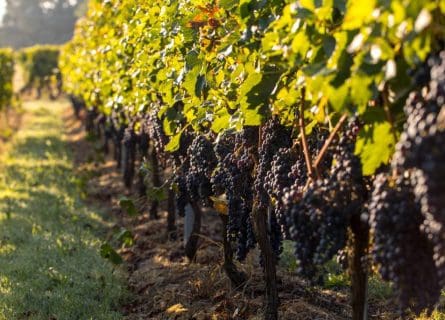
Critics have long regarded the terroir of Pessac-Leognan as innately superior to Graves’ ordinaire’—and not without good reason. Certainly, it is a highly intricate process. Over the centuries, rivers and glaciers have transported metamorphic rock eroded from the Pyrenees.
These processes deposited alluvial soils and gravel into what is now the prime vineyard territory south of Bordeaux. Thus, the gravel mounds or croupes across Pessac-Leognan vary enormously in terms of depth. The most shallow may have only thirty centimeters of gravel before reaching the subsoil. Elsewhere, deep gravel soils offer excellent drainage and superlative wine quality.
From Clay-Limestone to Gravel
However, soils are not homogeneous in this corner of Bordeaux. Numerous climats (vineyard sites) are planted on clay-limestone subsoils, which are far more suited to white grape varieties, particularly Sauvignon Blanc.
Indeed, in Pessac-Leognan, gravel terroir is usually planted with red grapes; although clay soils yield Merlot wines of good structure and richness, they can lack finesse. Further south, into the present-day Graves vineyards, there is a higher proportion of alluvial matter, clay, and limestone. The gravel croupes all but disappear on its southern border.
Maritime Climate: Challenges and Characteristics
Graves enjoys a maritime climate with mild winters and warm summers. Yet rainfall can be generous – occasionally too generous – in the spring and fall, running the risk of coulure (lack of berry set) and rot/dilution at harvest time.
The memory of wash-out vintages like 2013 has not yet faded in Bordeaux. Interestingly, the properties close to the city tend to ripen up to a week earlier than those around Leognan further south. This is because of the warmer mesoclimate that envelops the southern reaches of Bordeaux’s suburbs, affecting Haut-Brion and its neighbors.
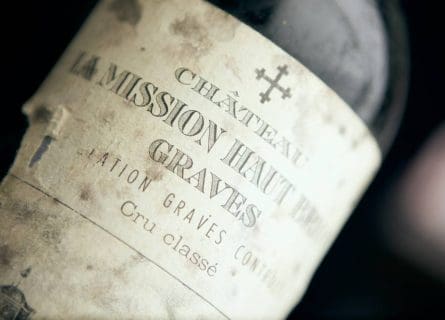
Graves is not a democracy: a handful of classified estates, such as Haut-Brion and La Mission Haut-Brion, that command serious prices in the auction market. Their international cachet is on par with the First Growths of the Medoc – collectors’ items that will improve in bottle for many decades after release.
Yet many of the top red wines of Pessac-Leognan, lacking equal fame, are no less outstanding: an intoxicating, sophisticated equilibrium of force and finesse with a signature flavor that Graves has made its own. Hints of earth, fern, and tobacco are the quintessential Graves characteristics, set against a backdrop of lush, lively, and wonderful fruit. The best examples will age for decades, although perhaps not quite as long as the mighty wines of Pauillac.
Embracing Merlot for Supple Wines
Cabernet Sauvignon has long been a dominant ingredient in the best red wines of Pessac-Leognan. However, It is increasingly being replaced with Merlot as estates seek more supple wines. This practice is also happening with growing regularity in the Medoc, particularly in St-Estephe. Red blends often incorporate Cabernet Franc and Petit Verdot, which contribute finesse and spiciness. On rare occasions, Malbec is also included.
The White Wines of Pessac-Leognan
However, although the most famous wines are red, several Pessac-Leognan châteaux also make some whites of superlative quality within the same appellation. Indeed, there have always been a few white Graves that typically fetch higher prices than the same estates’ red wines. Domaine de Chevalier is one shining example.
Just 18,000 bottles of a magnificently long-lived barrel-fermented white made from a blend of Sauvignon Blanc and Semillon are made each year and quickly sell out upon release. They age beautifully, offering exquisite beeswax, honey, and citrus aromas. The best white Bordeaux is more than a match for Grand Cru white Burgundy.
The Diversity and Quality of Southern Graves Wines
Of course, there is much more to the Graves region than its most famous appellation. The commune of La Brède marks the geographical division between Pessac-Leognan and Graves. The southern end of this zone of scattered vines produces excellent reds and whites, albeit few reach the great heights of its more famous cousin further north. Yet this is a fertile hunting ground for reds with deep, sappy fruit and whites of style and substance, based on Sauvignon Blanc and Semillon blends, often with a touch of Muscadelle.
The best are understated, oak-aged dry whites that beg to be enjoyed with food. But it is the ability of the Graves terroir – a mixture of sandy soils, silt, clay, and gravel – to produce excellent red and white wine that is its real trump card and why connoisseurs keep coming back for more.
Learn more about the Graves Classification.
Graves is the only region in Bordeaux to have undertaken a classification of its dry whites. Unsurprisingly, every single one of these Cru Classe wines is made in Pessac-Leognan. But, the Graves as a whole is a region where ‘Vins Blancs’ can occasionally surpass the reds in quality and finesse- critics fortunate enough to sample Haut-Brion Blanc can testify to that.
Meanwhile, there are properties, such as Larrivet-Haut-Brion, where the white wine is arguably superior to the red blend in every respect. The best cuvees can rival Puligny-Montrachet in their magnificent complexity and depth, a harmonious marriage between fruit and oak, variety, and site.
Evolving Trends and Rising Popularity
Moreover, the volumes produced are usually more generous. With notable exceptions, Graves Blanc (classified or not) is seldom very expensive. On the contrary, it can offer exceptional value for money. The market’s response to these wines, however, was traditionally lukewarm. Aside from the most renowned labels, merchants earned their crust from sales of red Graves; Sauvignon Blanc blends made in Bordeaux were no match for the insane popularity of Kiwi Sauvignon Blanc.
Then, something unthinkable occurred: discerning consumers grew weary of the intensely aromatic New World paradigm and started searching for alternatives. Thankfully, producers in Graves were only too happy to oblige – the acreage planted to white varieties has increased over the past ten years as dry white Bordeaux makes a spectacular comeback.
Although styles and blends naturally vary from winemaker to winemaker, the overall picture is one of elegance and not raw power. Indeed, Bordeaux Blanc is a more subtle, refined expression of the Sauvignon Blanc grape. It is tempered with the buttery opulence of Semillon and, occasionally, the floral perfume of Muscadelle and/or Sauvignon Gris.
Nevertheless, the ratio of Semillon and Sauvignon at many Graves estates has been upended recently, with the latter playing a more decisive role. As a result, the wines are cleaner/fresher, with grassy aromas and notes of blackcurrant leaf. They are well-made, affordable, and now highly commercially successful.
The Changing Face of Graves Blanc
Twenty-five years ago, Graves Blanc was viewed as a subordinate element to the significantly more profitable red Bordeaux blends. Yet, times change: it has become a recognized – and expanding – category in its own right. If you visit Graves today, expect white heights.
The sauvignon blanc grape varietal, originally from the Bordeaux region of France, is now one of the world's most loved white varieties.
Find out moreExplore the allure of the Semillon grape & its legendary connection to Sauternes. Unveil the history & flavors of this captivating varietal. Cheers!
Find out moreMuscadelle is a white grape varietal, primarily used for blending in the production of sweet white wines in the Bordeaux region.
Find out moreSauvignon Gris is a pink-berried mutation of Sauvignon Blanc, originally likely from Bordeaux but now also prominent in Chile. It is a relatively obscure grape, making up only 2% of Bordeaux's white wine grape production. Nearly extinct due to the phylloxera epidemic, its revival is credited to Jacky Preys, a winemaker from the Loire Valley.
Discover the irresistible allure of Cabernet Sauvignon—a worldwide favorite with robust, dark-bodied flavor. Unleash your wine journey today!
Find out moreMerlot is the most cultivated grape in Bordeaux and closely related to Cabernet Franc
Find out moreDelve into Malbec, a dark, small grape native to France, cherished for its thick skin and exceptional flavors. 🍇🍷
Find out moreCabernet Franc grape is a close relative of Merlot and Cabernet Sauvignon and is the principal blending grape used in Bordeaux.
Find out morePetit Verdot is a full-bodied red wine grape varietal used in classic Bordeaux blends and originates in southwestern France
Find out moreBordeaux is the world’s largest fine wine region – the engine of the auction trade. So it stands to reason that the city would nurture a thriving culinary scene; all that delicious wine requires haute gastronomy of the highest order. Fortunately, Bordeaux boasts a plethora of outstanding restaurants, ranging from humble brasseries to Michelin-starred extravaganzas.
Local specialties include Entrecote à la Bordelaise (sirloin steak covered in a decadently rich red wine sauce), Arcachon Bay oysters—fresh off the Atlantic—and Lamproie à la Bordelaise. They slowly braise this freshwater fish, available from April to June, in wine and cured ham, herbs, leeks, onion, and garlic. It is absolutely delicious with Graves Blanc.
Guide to Gastronomy of Bordeaux: Read more

Uncover Bordeaux's vibrant flavors and culinary gems with our expert guides. Plan an unforgettable trip now!
Read more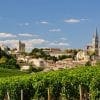
Uncover Saint Emilion's vibrant flavors and culinary gems with our expert guides. Plan an unforgettable trip now!
Read more
Uncover Arcachon vibrant flavors and culinary gems with our expert guides. Plan an unforgettable trip now!
Read more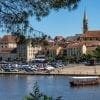
Uncover Bergerac's vibrant flavors and culinary gems with our expert guides. Plan an unforgettable trip now!
Read more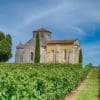
Uncover Cognac's vibrant flavors and culinary gems with our expert guides. Plan an unforgettable trip now!
Read more
Uncover Saintes's vibrant flavors and culinary gems with our expert guides. Plan an unforgettable trip now!
Read moreIf you would like us to customize an exclusive luxury tour, contact us and let us know your travel plans. We offer luxury food and wine tours for private groups of a minimum two guests. In addition, all of our private, chauffeured tours are available year-round upon request.

